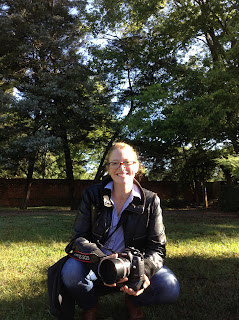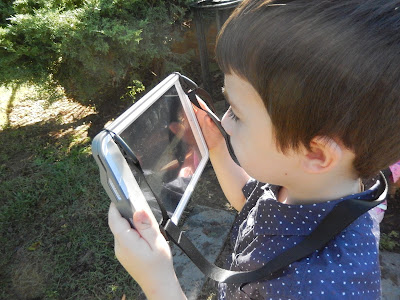MAKING PLANS to begin the day can be a way of helping children enter into the classroom with an idea of where they would like to play for a sustained time with materials they wish to explore. Taking some time to think about and draw a plan where a teacher writes down their thinking helps children begin play with a sense of importance and purpose.
Our classroom has been writing plans each day and we have seen children really noticing materials that interest them. They think about how they might use the materials, and their plan includes a drawing of their idea. This thinking incorporated one child's relationships with important people in her life at home to her life at school. Emerging before our eyes is this beautiful story of how a child, missing her mommy, included her mother in her plans as she discussed their shared love for race cars, an interest also passionately expressed by other children. This process of slowing down and purposefully drawing a plan helped this child make connections from her mommy at home to her life here in our classroom. This opportunity seems to have been a catalyst for her to work through her fear of separation and to empower her to form new relationships with friends and and teachers in the Forest Room.
| "My mommy. Dear Mama and Papa." 10/9/15 |
| "I want to play with the race cars. I want to draw my Mama. My Mama 10/19/15 |
| Here's Papa. Mama likes purple. Mama wants some race cars. Mama's Body 10/20/15 |
| Dear Mama, I want to play with the race cars. Mama's Body 10/20/15 |
| Following through with her plan. Is she thinking of wheels? 10/10/15 |
| Making connections by pairing materials 10/10/15 |
| She shared materials with other children. |
| "I want to build a race car." Tracing bottle cap and a toy race car 10/27/15 |
Continued interest in one to one correspondence with materials. Is she thinking of her Mama and Papa sitting in the car with her?
10/27/15 |
| She finished her race car after playing with the materials for a long while. 10/27/15 |
| Finding a mouse to ride in her car, she smiled with satisfaction. 10/28/15 |
This child came to school each day for two weeks with the idea of building a race car. As she drew her plan and then played with the materials she chose, I noticed that she talked about how her Mama and Papa could play with her. She seemed to make a cognitive leap bridging her love of Mama and Papa and race cars at home to her desire to join in the play in her classroom at school. Her determination to make a race car out of found materials seemed to provide her with the latitude to solve more than one problem. She could see new relationships forming with Mama and Papa where she is not actually with them but can include them in her desire to have them be near her. She also notices relationships of the materials she found and began to see how they could be put together to form her idea of a race car. She has since joined other children as they build race cars with blocks or become race cars as they run around "tracks". The process of making a plan gave her a way to express her feelings about missing Mama and Papa and then opened opportunities for her to form relationships with materials, teachers and new friends. This is the important work of two year olds.









